I spent most of my day in John’s old office, testing out the incredibly slow Ugandan Bureau of Statistics’ Internet connection. My top speed got around 5 kB/sec. And it certainly doesn’t help after being spoiled by MIT’s insane Internet connection. Since John’s Ministry (ICT) is brand new as of last year, they had to construct a new building, and right now everyone is in the process of moving. John tells me that he hopes to get a faster connection in that building…no one really wants to deal with the mess at the Bureau of Statistics. In any case I tried out a few tools in Linux which I think could help out with the annoying connection.
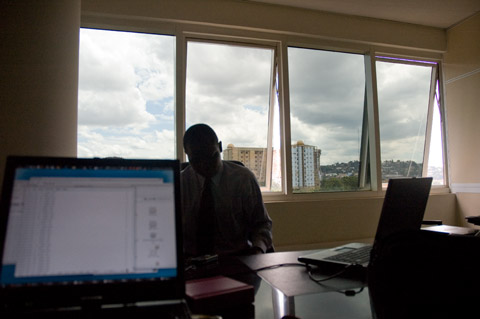
John also showed me the new Inveneo computer which the Ugandan government has already placed an order for quite a few of them. The PC is extremely light in terms of power consumption, which will definitely help with Uganda’s current electrical power situation. In fact I’m writing this on my laptop which is currently running on battery because the power went out…yet again.
Also, I know many of you are probably wondering if Uganda will ever address their infrastructure issues so that an Internet connection is more accessible. Satellite is currently one of the only ways to get the Internet here, but last year the Prime Minister of China visited Uganda to talk about installing a countrywide fiber backbone and laying down undersea cables which will supply Uganda directly. The construction for this is currently underway (you can see all the empty tubes for the cables waiting to be installed at most of the construction sites), and it should be finished roughly within a year or so.
Yesterday evening I got the chance to go up to M.T.A.C. to visit the InterConnection Uganda refurbishing center and take note of what I have to do. From the pictures I saw earlier this year, it was clear that the staff had done a lot of work cleaning up, but the center is still pretty bare. There’s a lot of work left to do.
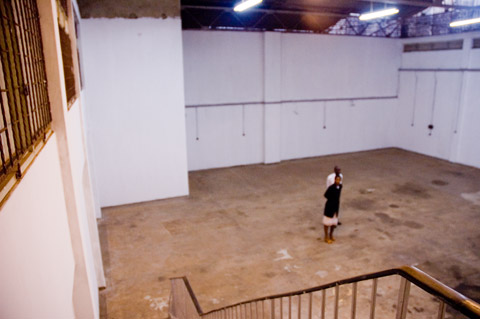
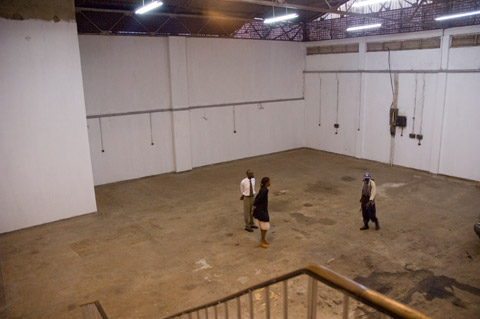
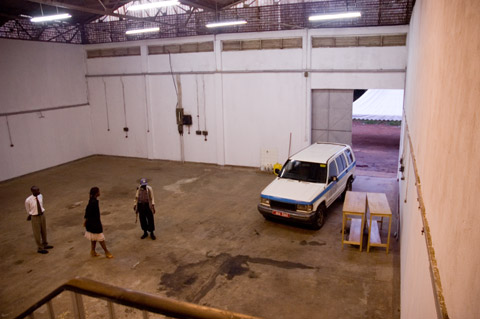
Later today I visited the center again to talk to the carpenter about enclosures for the cat5 cables (so that they aren’t strewn all over the place and stay somewhat in tact). He also brought the desks and shelf he finished for the center.
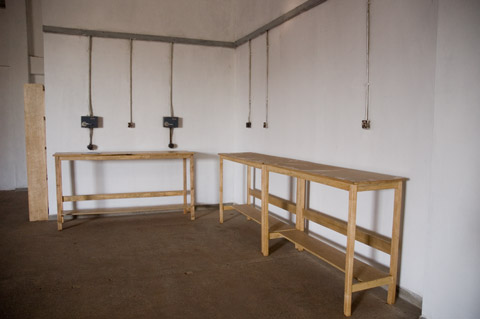
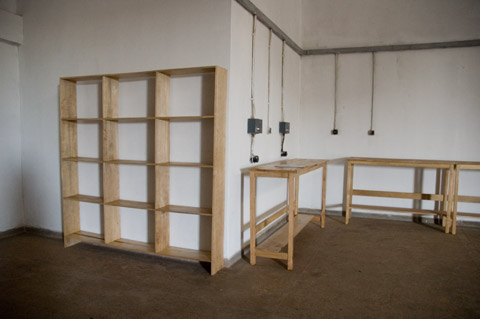
The plan is to put the monitor on the top and the case on the bottom level, and then add a level in between that extends outward a little for the keyboard and mouse. I was a bit concerned that the desks were a little too high and that the VGA cable for the monitor and PS2 cables for the mouse and keyboard might not reach the appropriate areas on the case (especially for the short “pizza box†cases). So today Brenda and I will test that theory. (Mom, be prepared for an order of VGA extension cables if necessary…I know a pretty cheap website for this.)
There is a lot of potential for this place. The real test will come when the computers finally arrive (that should be quite soon).
Do you know of other sources of information on the Chinese fiber project that you mentioned? How extensive is it? Will it reach rural areas?
Are there similar projects in other nations?
I have advocated backbone projects for some time, for example, in this report:
http://bpastudio.csudh.edu/fac/lpress/drafts/unctadcorrected.doc
Larry,
According to Honorable Nsambu, the project will be completed in the rural areas by 2009. The two month thing is apparently just for Kampala and outlying areas.
I’m not aware of similar projects in other nations.
Cheers,
-Biyeun
I think the two-month deadline is the infrastructure required for purposes of the CHOGM (Commonwealth Heads of Govt Meeting) in Kampala in November(?) this year. That should be/was meant to be phase 1 of the national backbone infrastructure project. Shem, Kigali
Yes, CHOGM is playing a huge part in motivating this project, but the Ministry of Information and Communication Technologies, since its inception last year, has been providing most of the support–with or without CHOGM in mind.
-Biyeun